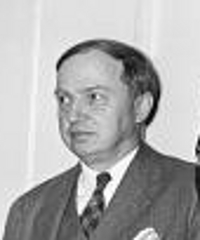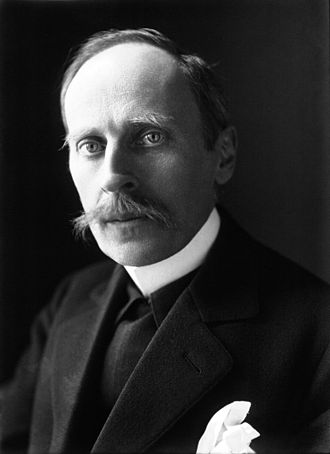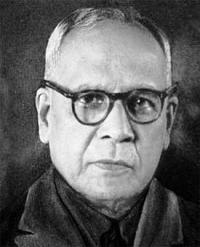SRI RAMAKRISHNA, the God-man of modern India, was born at Kamarpukur. This village in the Hooghly District preserved during the last century the idyllic simplicity of the rural areas of Bengal. Situated far from the railway, it was untouched by the glamour of the city. It contained rice-fields, tall palms, royal banyans, a few lakes, and two cremation grounds. South of the village a stream took its leisurely course. A mango orchard dedicated by a neighbouring zemindar to the public use was frequented by the boys for their noonday sports. A highway passed through the village to the great temple of Jagannath at Puri, and the villagers, most of whom were farmers and craftsmen, entertained many passing holy men and pilgrims. The dull round of the rural life was broken by lively festivals, the observance of sacred days, religious singing, and other innocent pleasures.
About his parents Sri Ramakrishna once said: “My mother was the personification of rectitude and gentleness. She did not know much about the ways of the world; innocent of the art of concealment, she would say what was in her mind. People loved her for her open-heartedness. My father, an orthodox brahmin, never accepted gifts from the sudras. He spent much of his time in worship and meditation, and in repeating God’s name and chanting His glories. Whenever in his daily prayers he invoked the Goddess Gayatri, his chest flushed and tears rolled down his cheeks. He spent his leisure hours making garlands for the Family Deity, Raghuvir.”
Khudiram Chattopadhyaya and Chandra Devi, the parents of Sri Ramakrishna, were married in 1799. At that time Khudiram was living in his ancestral village of Dereypore, not far from Kamarpukur. Their first son, Ramkumar, was born in 1805, and their first daughter, Katyayani, in 1810. In 1814 Khudiram was ordered by his landlord to bear false witness in court against a neighbour. When he refused to do so, the landlord brought a false case against him and deprived him of his ancestral property. Thus dispossessed, he arrived, at the invitation of another landlord, in the quiet village of Kamarpukur, where he was given a dwelling and about an acre of fertile land. The crops from this little property were enough to meet his family’s simple needs. Here he lived in simplicity, dignity, and contentment.
Ten years after his coming to Kamarpukur, Khudiram made a pilgrimage on foot to Rameswar, at the southern extremity of India. Two years later was born his second son, whom he named Rameswar. Again in 1835, at the age of sixty, he made a pilgrimage, this time to Gaya. Here, from ancient times, Hindus have come from the four corners of India to discharge their duties to their departed ancestors by offering them food and drink at the sacred footprint of the Lord Vishnu. At this holy place Khudiram had a dream in which the Lord Vishnu promised to he born as his son. And Chandra Devi, too, in front of the Siva temple at Kamarpukur, had a vision indicating the birth of a divine child. Upon his return the husband found that she had conceived.
It was on February 18, 1836, that the child, to be known afterwards as Ramakrishna, was born. In memory of the dream at Gaya he was given the name of Gadadhar, the “Bearer of the Mace”, an epithet of Vishnu. Three years later a little sister was born.
BOYHOOD
Gadadhar grew up into a healthy and restless boy, full of fun and sweet mischief. He was intelligent and precocious and endowed with a prodigious memory. On his father’s lap he learnt by heart the names of his ancestors and the hymns to the gods and goddesses, and at the village school he was taught to read and write. But his greatest delight was to listen to recitations of stories from Hindu mythology and the epics. These he would afterwards recount from memory, to the great joy of the villagers. Painting he enjoyed; the art of moulding images of the gods and goddesses he learnt from the potters. But arithmetic was his great aversion.
At the age of six or seven Gadadhar had his first experience of spiritual ecstasy. One day in June or July, when he was walking along a narrow path between paddy-fields, eating the puffed rice that he carried in a basket, he looked up at the sky and saw a beautiful, dark thunder-cloud. As it spread, rapidly enveloping the whole sky, a flight of snow-white cranes passed in front of it. The beauty of the contrast overwhelmed the boy. He fell to the ground, unconscious, and the puffed rice went in all directions. Some villagers found him and carried him home in their arms. Gadadhar said later that in that state he had experienced an indescribable joy.
Gadadhar was seven years old when his father died. This incident profoundly affected him. For the first time the boy realized that life on earth was impermanent. Unobserved by others, he began to slip into the mango orchard or into one of the cremation grounds, and he spent hours absorbed in his own thoughts. He also became more helpful to his mother in the discharge of her household duties. He gave more attention to reading and hearing the religious stories recorded in the Puranas. And he became interested in the wandering monks and pious pilgrims who would stop at Kamarpukur on their way to Puri. These holy men, the custodians of India’s spiritual heritage and the living witnesses of the ideal of renunciation of the world and all-absorbing love of God, entertained the little boy with stories from the Hindu epics, stories of saints and prophets, and also stories of their own adventures. He, on his part, fetched their water and fuel and served them in various ways. Meanwhile, he was observing their meditation and worship.
At the age of nine Gadadhar was invested with the sacred thread. This ceremony conferred upon him the privileges of his brahmin lineage, including the worship of the Family Deity, Raghuvir, and imposed upon him the many strict disciplines of a brahmin’s life. During the ceremony of investiture he shocked his relatives by accepting a meal cooked by his nurse, a sudra woman. His father would never have dreamt of doing such a thing But in a playful mood Gadadhar had once promised this woman that he would eat her food, and now he fulfilled his plighted word. The woman had piety and religious sincerity, and these were more important to the boy than the conventions of society.
Gadadhar was now permitted to worship Raghuvir. Thus began his first training in meditation. He so gave his heart and soul to the worship that the stone image very soon appeared to him as the living Lord of the Universe. His tendency to lose himself in contemplation was first noticed at this time. Behind his boyish light-heartedness was seen a deepening of his spiritual nature.
About this time, on the Sivaratri night, consecrated to the worship of Siva, a dramatic performance was arranged. The principal actor, who was to play the part of Siva, suddenly fell ill, and Gadadhar was persuaded to act in his place. While friends were dressing him for the role of Siva — smearing his body with ashes, matting his locks, placing a trident in his hand and a string of rudraksha beads around his neck — the boy appeared to become absent-minded. He approached the stage with slow and measured step, supported by his friends. He looked the living image of Siva. The audience loudly applauded what it took to be his skill as an actor, but it was soon discovered that he was really lost in meditation. His countenance was radiant and tears flowed from his eyes. He was lost to the outer world. The effect of this scene on the audience was tremendous. The people felt blessed as by a vision of Siva Himself. The performance had to be stopped, and the boy’s mood lasted till the following morning.
Gadadhar himself now organized a dramatic company with his young friends. The stage was set in the mango orchard. The themes were selected from the stories of the Ramayana and the Mahabharata. Gadadhar knew by heart almost all the roles, having heard them from professional actors. His favourite theme was the Vrindavan episode of Krishna’s life, depicting those exquisite love-stories of Krishna and the milkmaids and the cowherd boys. Gadadhar would play the parts of Radha or Krishna and would often lose himself in the character he was portraying. His natural feminine grace heightened the dramatic effect. The mango orchard would ring with the loud kirtan of the boys. Lost in song and merry-making, Gadadhar became indifferent to the routine of school.
In 1849 Ramkumar, the eldest son, went to Calcutta to improve the financial condition of the family.
Gadadhar was on the threshold of youth. He had become the pet of the women of the village. They loved to hear him talk, sing, or recite from the holy books. They enjoyed his knack of imitating voices. Their woman’s instinct recognized the innate purity and guilelessness of this boy of clear skin, flowing hair, beaming eyes, smiling face, and inexhaustible fun. The pious elderly women looked upon him as Gopala, the Baby Krishna, and the younger ones saw in him the youthful Krishna of Vrindavan. He himself so idealized the love of the gopis for Krishna that he sometimes yearned to be born as a woman, if he must be born again, in order to be able to love Sri Krishna with all his heart and soul.


